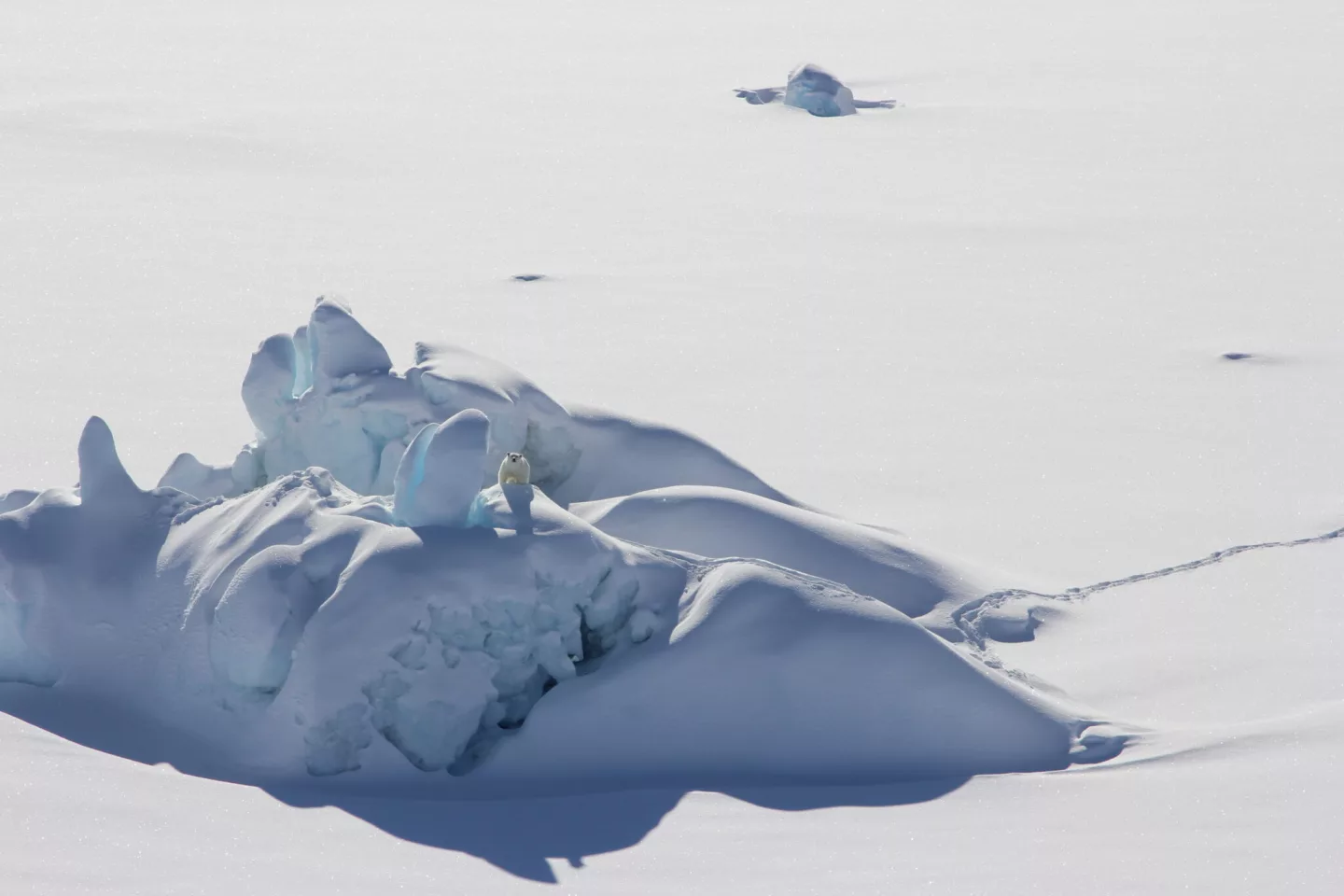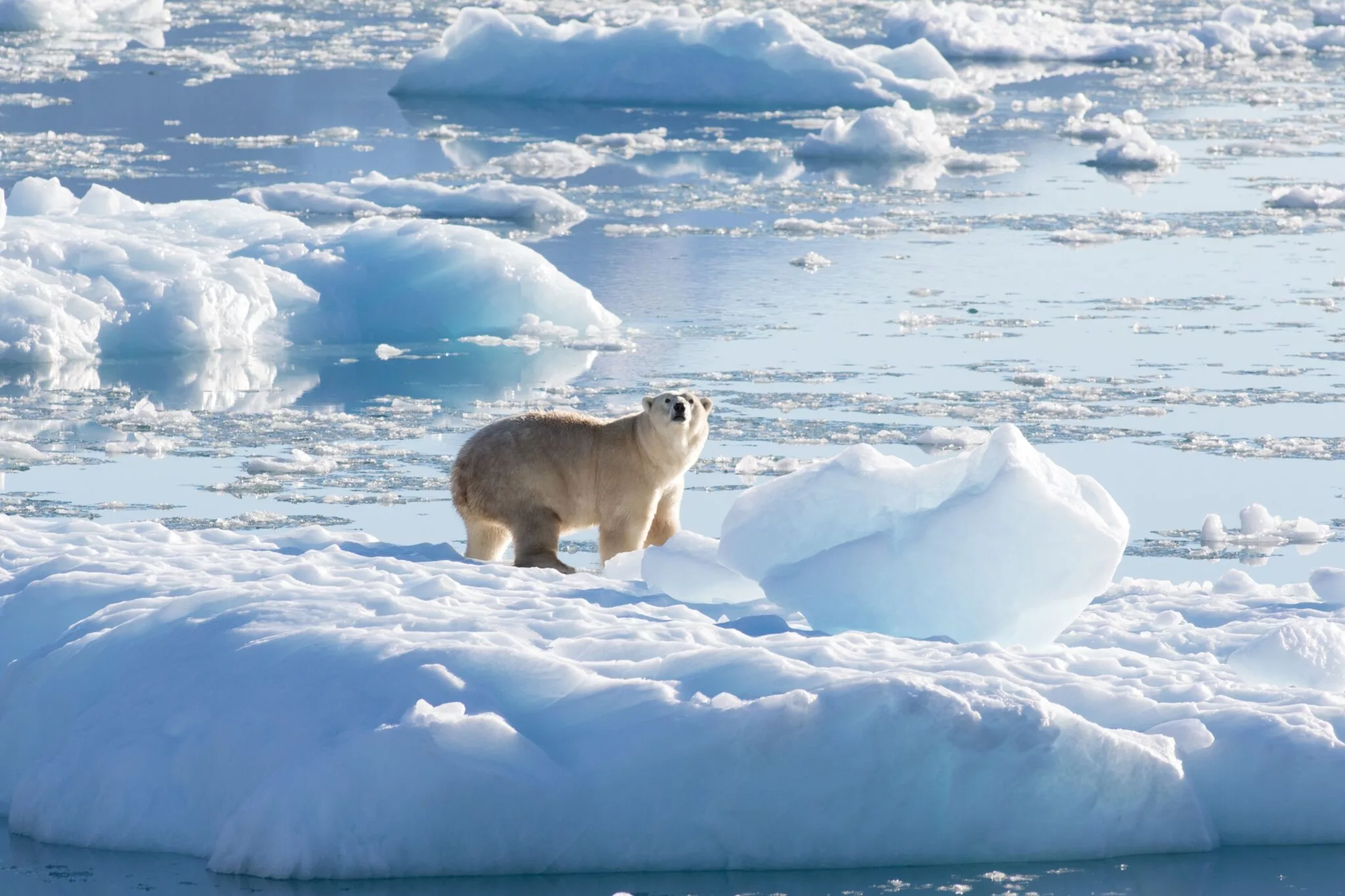Polar bears are highly dependent on sea ice as a platform to hunt their prey, and with record low concentrations continuing to be seen in the Arctic, these large carnivores face a real fight for survival. But scientists have uncovered new reason for optimism when it comes to their ability to adapt in the face of climate change, documenting a genetically distinct subpopulation of polar bears that instead survive on glacier slush for large parts of the year.
Led by polar scientists at the University of Washington, the research draws on seven years worth of data collected across the southeastern coast of Greenland, along with 30 years of historical data from the region. Rugged mountains and extreme weather have made studying this part of the world a difficult undertaking, but satellite tracking data and samples sourced from polar bear subsistence hunters for genetic analysis have provided the scientists with valuable new insights into the creatures' behavior.
“We wanted to survey this region because we didn’t know much about the polar bears in Southeast Greenland, but we never expected to find a new subpopulation living there,” said lead author Kristin Laidre. “We knew there were some bears in the area from historical records and Indigenous knowledge. We just didn’t know how special they were.”
These polar bears only have access to sea ice for four months of the year, and the team's investigations revealed that they were uniquely adapted to their environment, hunting seals from freshwater ice breaking off Greenland's glaciers in the meantime. This subpopulation was found to be more genetically different to its nearest neighbor than any of the other 19 previously identified polar bear populations. The scientists believe this is the result of their isolated environment, which sees them boxed in by large mountain peaks, the Greenland ice sheet and hazardous open waters.
“They are the most genetically isolated population of polar bears anywhere on the planet,” said co-author Beth Shapiro. “We know that this population has been living separately from other polar bear populations for at least several hundred years, and that their population size throughout this time has remained small.”

Unlike typical polar bears that roam far across the seas in search of food, these bears stuck much closer to home by comparison. They tend to wander the ice inside protected Greenland fjords and would occasionally float away on ice floes, before hopping off and wandering back home.
“In a sense, these bears provide a glimpse into how Greenland’s bears may fare under future climate scenarios,” Laidre said. “The sea ice conditions in Southeast Greenland today resemble what’s predicted for Northeast Greenland by late this century.”
While the study does bode well for adaptability of the species and suggest these types of locations could become refuges as sea ice continues to disappear, the scientist do urge caution. Longer term monitoring would be required to really understand the wellbeing of the bears, and these glacier ice habitats are unlikely to support anywhere near the number of polar bears that Arctic sea ice has traditionally.
“If you’re concerned about preserving the species, then yes, our findings are hopeful – I think they show us how some polar bears might persist under climate change,” Laidre said. “But I don’t think glacier habitat is going to support huge numbers of polar bears. There’s just not enough of it. We still expect to see large declines in polar bears across the Arctic under climate change.”
The research was published in the journal Science.
Source: University of Washington





